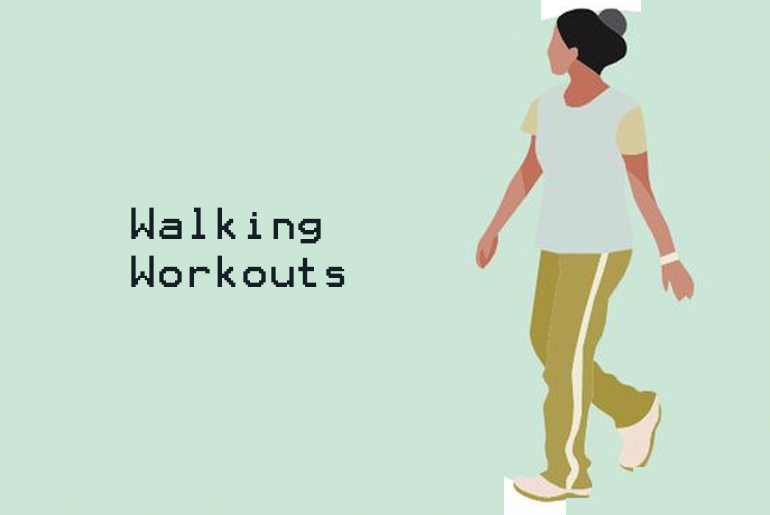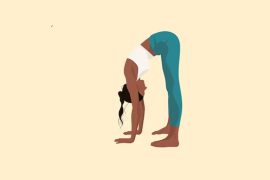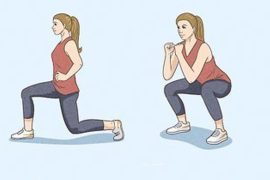Walking is a versatile and effective exercise with benefits that extend beyond just meeting daily step goals. By incorporating targeted walking workouts like interval training and varying inclines, you can effectively burn calories and sculpt lean legs and glutes. This low-impact activity supports cardiovascular health, enhances strength, balance, and flexibility, and is linked to longer life expectancy. Experts highlight walking’s ability to manage chronic conditions, including diabetes, depression, and mental health challenges, making it a holistic approach to physical and emotional well-being. Upgrade your routine with these strategies to reap both fitness and overall health benefits.
Establishing a consistent walking habit is a powerful step toward a healthy lifestyle, as it boosts overall fitness, enhances mental health, and helps manage chronic conditions. Aiming for three to five walking sessions during the workweek and at least one on the weekend to maintain consistency. For those targeting leaner legs and glutes, specific walking workouts can amplify results. Incorporating strategies like interval walking, incline walking, or hill climbs can intensify your routine, burning more calories and building lower-body strength. These focused workouts not only challenge your endurance but also sculpt your legs and glutes, making walking a dynamic and impactful fitness choice.
Walking Workouts to Sculpt Lean Legs and Lift Your Glutes:
1. Intervals (Walking Intervals)
Benefits:
- Boosts cardiovascular fitness and metabolism.
- Helps improve stamina, endurance, and fat loss.
- Increases overall walking intensity, making it more efficient for calorie burning.
How to Perform:
- Walk at a moderate pace for 2–3 minutes to warm up.
- Alternate between a brisk walk (speed up for 1–2 minutes) and a slow walk (recovery pace for 1–2 minutes).
- Repeat for 20–30 minutes.
- You can adjust the speed and recovery times depending on your fitness level.
2. Outdoor Hill Walking
Benefits:
- Builds lower body strength, especially in the glutes, calves, and thighs.
- Increases calorie burn due to the incline.
- Engages core stability for balance.
- Great for toning muscles and improving endurance.
How to Perform:
- Find a hill with a moderate incline.
- Walk up the hill at a steady pace, maintaining good posture (avoid leaning forward).
- When walking down, keep a slow pace to avoid joint strain.
- Aim for 20–30 minutes, adjusting the difficulty by choosing steeper hills or varying the terrain.
3. Steady-State Incline Treadmill Walk
Benefits:
- Provides a low-impact cardiovascular workout that mimics hill walking.
- Increases calorie burn by challenging the lower body muscles.
- Effective for improving cardiovascular endurance and toning muscles.
How to Perform:
- Set the treadmill to an incline of 5–15% (adjust depending on your fitness level).
- Walk at a steady pace (not too fast, around 3–4 mph) while maintaining good posture.
- Walk for 30–45 minutes, ensuring that you maintain a consistent pace throughout.
- Make sure to engage your core and glutes while walking.
4. Hiking
Benefits:
- Engages the entire body, improving strength, balance, and endurance.
- Boosts cardiovascular health and tones the lower body muscles.
- Provides mental health benefits by being outdoors and surrounded by nature.
How to Perform:
- Choose a hiking trail that suits your fitness level (start with easy or moderate trails if you’re new to hiking).
- Wear supportive shoes and bring water.
- Maintain a steady pace, adjusting to the terrain and your fitness level.
- Take breaks when needed, but aim for at least 30–60 minutes of continuous hiking.
5. Walking With Lunges
Benefits:
- Combines the benefits of walking with strength training, particularly for the lower body.
- Targets glutes, quads, hamstrings, and calves.
- Boosts flexibility, balance, and coordination.
How to Perform:
- Start with a normal walking pace.
- Every 5–10 steps, take a walking lunge by stepping forward into a lunge position (ensuring your knee stays behind your toes).
- After each lunge, bring your back leg forward and continue walking.
- Perform 10–15 lunges on each side, alternating between regular walking and lunging.
Pro Tips:
- Warm-Up & Cool-Down: Always start with a 5–10 minute warm-up (light walking) and finish with a cool-down to reduce muscle soreness and improve flexibility.
- Form: Maintain proper posture while walking, keeping your shoulders back and engaging your core. This will help prevent strain and maximize benefits.
- Variation: Switch up these activities throughout the week to avoid plateau and keep the workouts exciting.
Disclaimer:
The information contained in this article is for educational and informational purposes only and is not intended as a health advice. We would ask you to consult a qualified professional or medical expert to gain additional knowledge before you choose to consume any product or perform any exercise.







